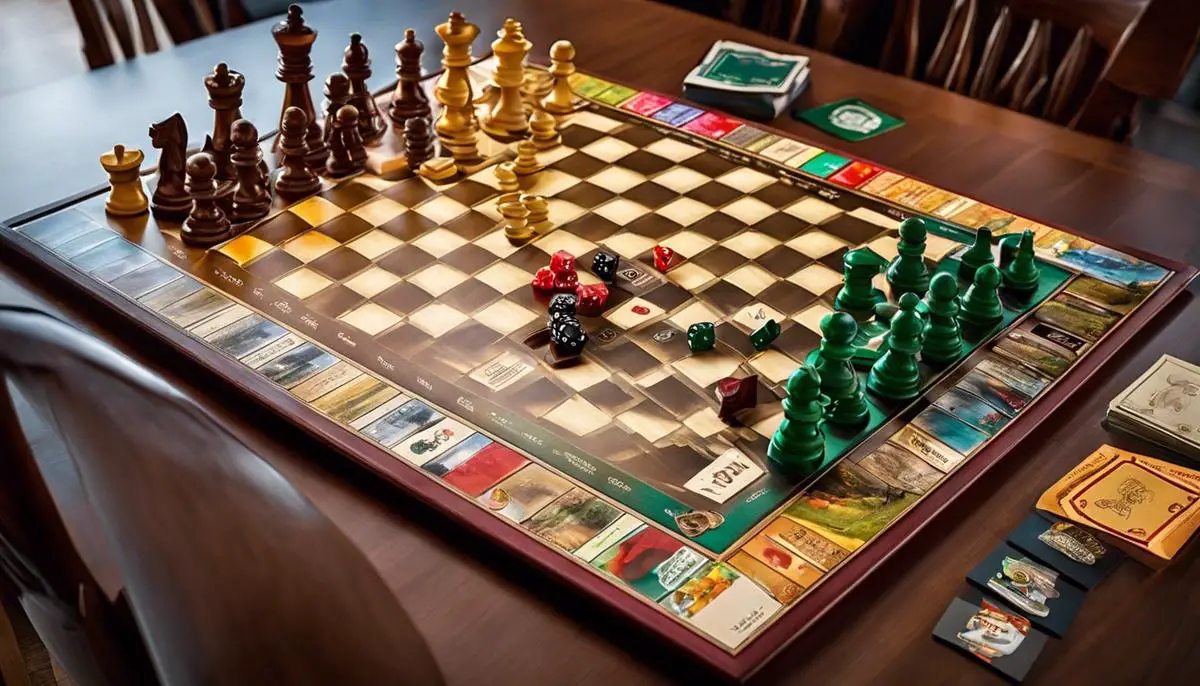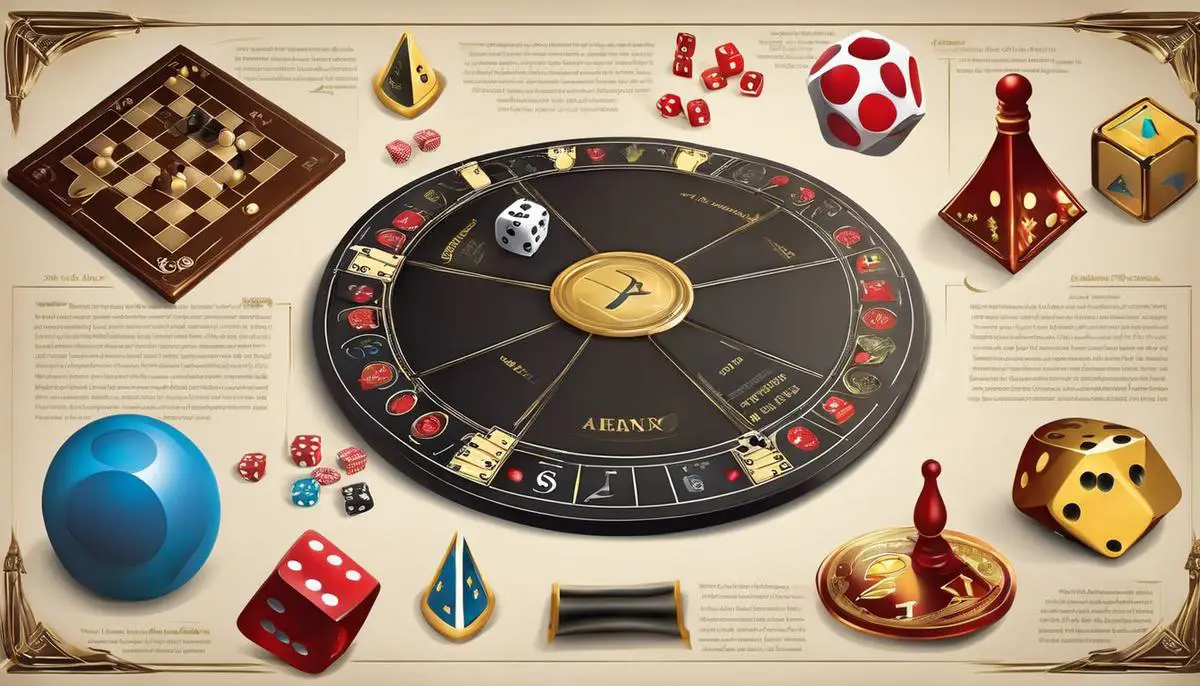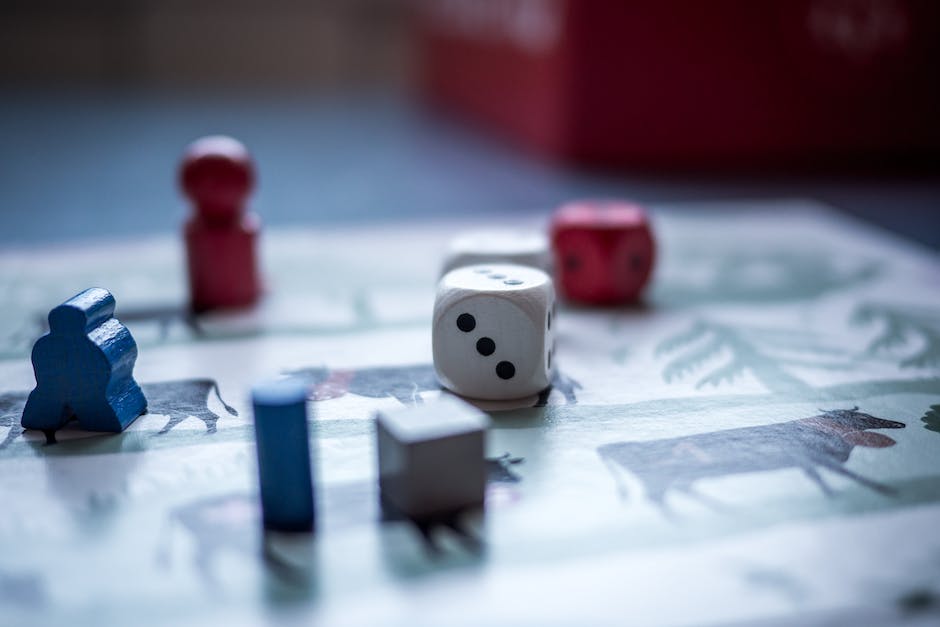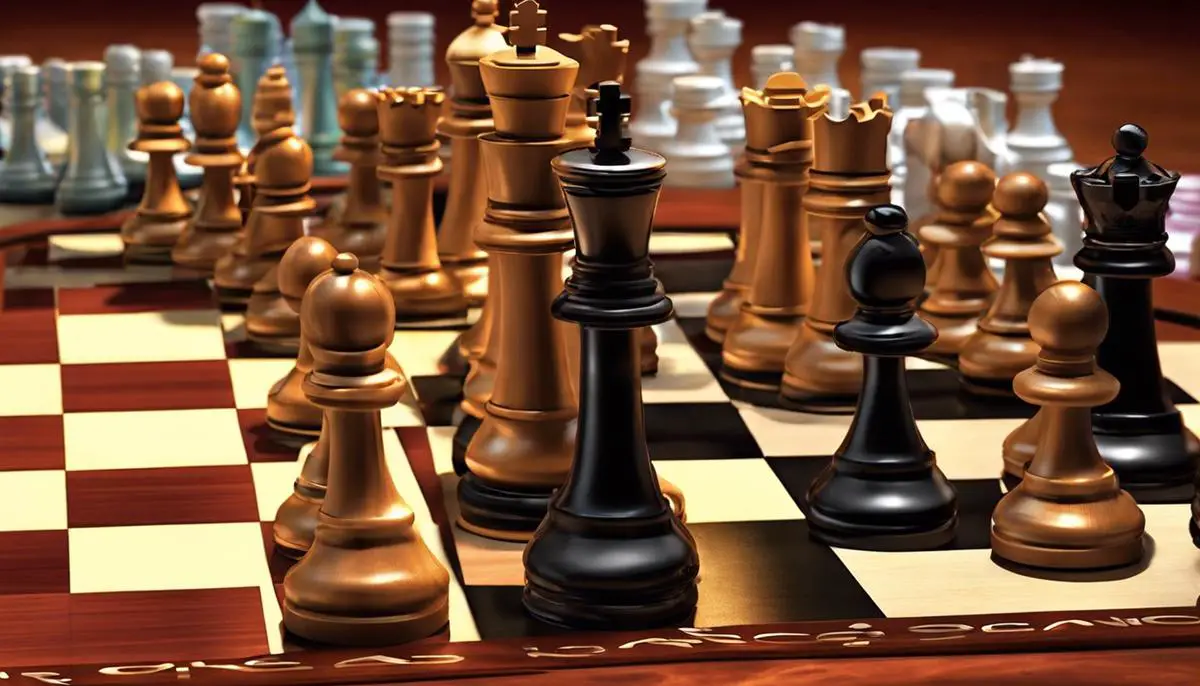Immersed in a world of playful competition and strategic thinking, many enthusiasts perceive board games merely as entertainment. From classic to contemporary editions, every board game is a remarkable blend of rules, artwork, and inventive narratives, yet they are often underestimated in their capacity to convey deeper symbolic representation. In this enriching journey, we will delve into the uncharted realms of the intriguing board games universe, putting the pieces together and unraveling the hidden meanings embedded in classic and modern board games. From game design elements to game mechanics, we’ll see how symbolism breathes life into our favorite board games and elevates the gaming experience beyond mere amusement.
Symbolism in Classic Board Games
Board games have been a constant source of entertainment, education, and tradition for centuries. But have you ever stopped to ponder about the deeper meanings hidden beneath the playful pawns, intricate designs, and colorful squares of your favorite classic board games?
Diving into the intriguing world of board games uncovers layers of history, social norms, and even philosophies embedded within them, offering a whole new perspective on these classic pastimes. Whether it’s Monopoly, Chess, or Scrabble, each game kick-starts our intellectual gears while subtly narrating a tale of societal values and historical contexts.
Let’s unveil the unexplored depths of these beloved games!
Monopoly
An all-time favorite, Monopoly is more than just buying prime real estate and driving opponents into bankruptcy. Its origins date back to the early 20th century, as an attempt to enlighten players about the inequality-induced issues in capitalism. The highs and lows of the game represent the uncertain, fluctuating economic conditions and highlight the cutthroat competition of the real world.
Chess
On the other hand, Chess, with origins dating back to 6th-century India, paints a strategic battlefield, reflecting the hierarchical nature of feudal societies. Each piece, from the pawn to the king, has a specific role and power, echoing societal roles and class structures. More than just a game of checkmate, Chess stimulates critical thinking, patience, and foresight.
Scrabble
Scrabble, a word enthusiast’s delight, and perhaps the most educational of all, not only broadens a player’s vocabulary but also nurtures strategic thinking, as you need to make the best use of your letters for maximum points. But did you know Scrabble was invented during the Great Depression as a source of joy and hope amid hard times? It served not only as a diversion but also as a beacon of creativity in a dreary era.
Life
Life, another popular board game, was designed in the 19th century to echo the moral and ethical choices of life. It strives to teach players that actions have consequences, and sometimes life can be as unpredictable as a spin of the wheel.
Clue
Clue, with its compelling whodunit setting, was invented in England during World War II. It secretly mirrors the intricate espionage and secrecy that colored that time period, all hidden beneath the thrill of solving a murder mystery.
While board games bring people together and facilitate a thrilling competition, their profound layers of meaning make them a compelling commentary on cultural norms, historical period and societal values. So next time you roll the dice or draw a card, remember you aren’t just playing a game but partaking in a piece of history and a slice of philosophical thought. What an engaging way to celebrate a beloved hobby! So, have fun, stay curious, and keep gaming!

Symbolism in Modern Board Games
Exploring Symbolism in Contemporary Board Games
Stepping beyond the realm of classic board games such as Monopoly, Chess, and Scrabble, the evolution of board games in recent years has produced some truly in-depth and immersive experiences. Newer games incorporate intriguing layers of symbolism, sometimes hidden deep within the game’s mechanics, enhancing not only the gameplay but also giving players food for thought long after the game pieces are packed away.
Take, for instance, the much-acclaimed civilization-building game, “Terra Mystica”. Each player chooses a unique faction representing a multitude of different species, each having extraordinary abilities and exclusive elements. The intricacy of the game lies not only in the overlapping gameplay mechanics such as settling lands and praying to gods but within the multi-faceted symbolization of existential questions about the harmonization of diverse races, ideologies, and societal structures within the same universe.
Or, let us consider “Pandemic” – a cooperative game that has gained timely attention due to its frightening resemblance to actual global events. The players, as a team, strive to defend the world against threatening diseases. This board game wonderfully symbolizes the essentiality of collective problem-solving, worldwide cooperation, and a unified approach against global concerns, soundly resonating with our actual world crises.
Modern board games also extensively employ thematic and aesthetical symbolism. Case in point, “Mysterium”, a cooperative board game where players take on the roles of psychic investigators attempting to solve a murder in a haunted manor. Not only does the deeply engrossing Gothic artwork and intricately crafted player pieces enhance the ambience of the game, but they also serve as symbols, pointing to truths about the mystery of life, the unexplainable, and man’s quest for understanding.
Setting sail towards slightly lighter-hearted examples, maritime-focused games such as “Merchants and Marauders” and “Pirate’s Cove” offer an adventurous escapade on the high seas. Beneath the surface, these games subtly convey the deeper implications of moral dilemmas and the tangible effects of risk-taking. Each plundered treasure or conquered island isn’t just a victory in the game, but it represents real-world hard choices and their consequences, further enriching the gaming experience.
The industrial revolution comes to life in games like “Power Grid” or “Ticket to Ride”, where creating the most productive energy distribution network or the longest train route is the road to victory. Here, players are subtly encouraged to think about the tension between industrial expansion and sustainable practices. Through symbolic game components and match progression, these games pose serious questions about balancing societal growth with environmental consciousness.
The brilliance about symbolism in board games – especially modern ones, is that it combines intellectual challenge with emotional resonance. These games, while offering hours of entertainment, also broaden our perspective and understanding of various societal, moral, and existential issues, all within the confines of a game board. As we continue to roll the dice and draw the cards, it’s in these little moments of realization and reflection that we comprehend what an extraordinary journey these board games truly represent.

Symbolism and Game Design
When delving into board games, an aspect lesser discussed but deeply nuanced and integral is the use of symbols. Not only do symbols aid gameplay, but they also play a key role in developing the game’s theme, advancing the narrative and building the context in which the game operates.
Civilization-building games such as “Terra Mystica” utilize symbols to represent different civilization attributes and resources. Each type of terrain in “Terra Mystica”, for example, is symbolized by a different color and shape, representing the various resources they provide. Beyond just resource management, these symbols subtly teach players about the nature of civilizations, how they prosper through utilizing resources and how different terrains influence their growth.
On the other hand, cooperative games like “Pandemic” deploy symbols to create a sense of urgency and shared purpose. Each player assumes a specific role, represented by unique symbols (like a syringe for the medic), which influence their abilities within the game. The symbols of diseases spreading across the global map heightens the sense of impending disaster, creating a cooperative spirit among players.
Now let’s look at “Mysterium,” where symbols are integral to its entire gameplay and aesthetic. This clue-giving and deduction game center around interpreting and assigning meaning to beautifully illustrated yet enigmatic cards full of symbols and imagery. These serve not only as game mechanics but also as subtle guides to understanding the metaphysical and whimsical world of “Mysterium.”
Maritime-centric games like “Merchants and Marauders” and “Pirate’s Cove” use symbols to communicate the very essence of sea exploration, trade, and piracy. Whether it’s the skull and crossbone warning of a pirate threat or the wheel and anchor to signify navigation and anchorage, these symbols help immerse players fully into the seafaring world.
Another innovative usage of symbols lies within the fold of games emphasizing the tension between industrial expansion and sustainability. “Power Grid’s” smoke stacks and factory icons hit home the industrial powers driving the game while the “dirty” and “clean” resources, symbolized by different colors, subtly hint at the environmental implications. Similarly, “Ticket to Ride,” despite its simple premise of train route building, subtly utilizes train car cards and route markers as symbols of the relentless march of progress – and the impact on the landscape in its wake.
Through thoughtful inclusion and placement, these symbols in board games aren’t just decorative but deeply intellectual, resonating with us on a subconscious level. They subtly influence not just how we play the games but also how we perceive, understand and empathize with the broader societal, moral, and existential issues the games touch upon.
To sum it up: whether it’s building a civilization, battling a pandemic, interpreting mystical cards, sailing tumultuous seas or grappling with progress versus sustainability, these symbols lay the groundwork for our gameplay and deepen our engagement. So next time you roll the dice or draw a card, remember: in the world of board games, symbols are not just symbols. They’re a gateway to a deeper, richer gaming experience.

Interpreting Board Game Symbolism
Entering the Magical World of Terra Mystica: Unearthing the Symbols of Civilization-Building Games
Navigating your course across the vibrant, diverse lands of Terra Mystica, you’re not just shaping a civilization from the ground up. You’re engaging with the fundamental symbols of society – resources, structures, and environments – and manipulating them to carve out your space in the world. The bridges, dwellings, and sanctuaries you build are rich with symbolism, representing your civilization’s identity, growth, and expansion.
Pandemic: Uncovering Symbolism in a Race Against Time
Each token and pawn in Pandemic isn’t just a game mechanical tool; it’s a direct symbol of interconnectivity, global health crises, and the urgent need for collective action. The world map isn’t backdrop; it’s a visual reminder of the vast, complex network of human society under risk. Every epidemic card drawn elicits a visceral response, emblematic of sudden, unforeseen crises.
Visual Clues and Aesthetic Enigma: The Symbolic Essence of Mysterium
In Mysterium, visual symbols hold the key. Here, players engage with abstract, dreamlike images conveying concepts transcending words. Rich in color, detail, and emotion, these images, in essence, represent phases of a mystery that needs to be solved – but, at a deeper level, they invite players to broaden their interpretative horizons and to see things not for what they are, but for what they might represent.
The Symbolism of Sea, Pirates, and Trade in Maritime Games
Board games like Merchants and Marauders and Pirate’s Cove capitalize on the rich tapestry of maritime history filled with tales of exploration, adventure, trade, and piracy. Symbols represented in form of ships, treasures, and the infamous Jolly Roger flag go beyond their literal meaning and connect us back to the age of high-seas adventure.
Symbolism in the Industrial Expansion vs. Sustainability Debate
In games like Power Grid and Ticket to Ride, players confront the delicate balance between industrial growth and sustainable development. The symbols of resources, power plants, and railroad tracks are stark reminders of the significant environmental footprint of our relentless drive for expansion.
Peeling Back the Layers: The Intellectual and Emotional Resonance of Symbolism in Board Games
Symbols in board games resonate on an intellectual and emotional level. These elements strengthen players’ emotional connection to the game, imbuing it with depth beyond the mechanics.
The Relevance of Symbolism: Enhancing Game Engagement
From pieces, cards, and game boards to themes, plots, and rules, every aspect can convey meaning and symbolism. Recognizing these symbols can help you appreciate the game from a more comprehensive perspective, understand its story at a deeper level, and increase your engagement and enjoyment.
Indeed, understanding symbolism in board games unearths layers of meaning that not only enhance our gaming experience but, in a broader sense, offer a unique lens through which we can more deeply understand society, history, and humanity.

Peeling back the layers of board games and understanding their symbolism is a fascinating and rewarding exploration that opens up a new dimension of appreciation and enjoyment. Whether it’s a timeless classic such as chess or a modern favorite like Pandemic, the symbols and themes found within games significantly contribute to the overall gaming experience, enriching every roll of the dice or move on the board. Through this exploration of board game symbolism, we have gained unique insights that heighten our engagement, altar our strategies, and deepen our understanding of the narratives woven into each game. This appreciation and understanding affirm that board games go beyond surface complexities and trivial pursuits, showcasing the richness and depth of this often-underestimated form of entertainment.
